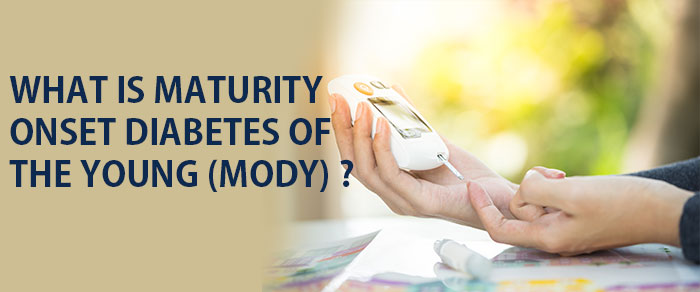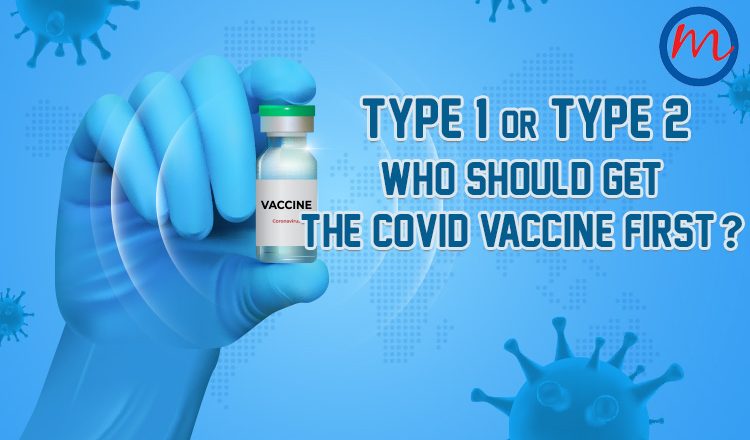DR.V. MOHAN,
Chairman & Chief Diabetologist Dr. Mohan’s Diabetes Specialities Centre & Director & Chief of Diabetes Research, Madras Diabetes Research Foundation
and
DR. RADHA VENKATESAN,
Executive Scientific Officer & Head, Dept. of Molecular GeneticsMadras Diabetes Research Foundation, Chennai, India
The entity known as ‘Maturity Onset Diabetes of the Young (MODY)’ was first described by Robert Tattersall and Stefan Fajans in a classic paper published in the journal, ‘Diabetes’ in the year 1975. At that time, diabetes was classified into 2 types based on the age at onset of diabetes. If the onset of diabetes was above 40 years of age, it was called as ‘Maturity Onset Diabetes’ or ‘MOD’ and if the onset was below 40 years of age, it is called as ‘Growth Onset Diabetes’ or ‘GOD’. It was generally presumed that all MOD would be equivalent to what is classified today as ‘Type 2 diabetes’ and can be treated without insulin and with tablets and diet and exercise whereas the GOD was considered to be equivalent of ‘Insulin dependent diabetes mellitus’ or ‘type 1 diabetes’ and they were started on insulin injections.
Tattersall and Fajans described a group of young onset children, adolescents and young adults with diabetes who did not need insulin and were successfully treated with oral hypoglycaemic agents. These patients were called as ‘Maturity onset diabetes of the young’ or ‘MODY’ because the onset was at an young age, but were to be different from the classical growth onset which we called as ‘type 1 diabetes’ today. At that time, the genetics of MODY was not known. In 1992, the first MODY gene was discovered. Soon, different subtypes of MODY from MODY 1 to MODY 14 were identified, each with specific genetic defect in one or the other chromosome. Since MODY was caused by a single defect, they come under the category of ‘Monogenic Diabetes’.
The clinical features of MODY was originally described by Tattersall and Fajans are as follows :
- Age at onset < 25 years
- Strong family history of diabetes going through 3 or more generations with at least one of the parents having the disease
- Do not require insulin for management, at least for a few years
- Absence of ketoacidosis
- Absence of obesity or other sign of insulin resistance like acanthosis nigricans
- No evidence of ketoacidosis
- Fairly well preserved beta cell function
- No evidence of insulin antibodies (auto immunity as seen in patients with type 1 diabetes)
With these clinical features, a number of youth onset patients were classified as MODY. However, the problem at that time was that in the absence of a specific genetic marker, MODY was often confused with type 2 diabetes which occurs in the young. Once the genetic defects in MODY were identified, it was then possible to accurately diagnose MODY. Of the 14 varieties of the MODY that have been described, some forms like MODY 1, 2,3 and 5 are very well known and the clinically features are well characterized. The clinical features of the rarer forms of the MODY are less well described and indeed it is doubted whether some of them are truly MODY as shown in Table 1.
If a young patient is diagnosed with what looks like type 1 diabetes but has atypical features, example, the pancreatic beta cell function seems to be relatively preserved (C-peptide levels are present) and if the anti-bodies associated with type 1 diabetes like GAD antibody, Zinc transporter, IA 2, ICA, etc., are absent, it is well worth screening that person for MODY. By doing a simple genetic screening test, it can be identified whether the person has MODY and also which type of MODY. Some forms of MODY like MODY 1, MODY 3 and MODY 12 respond to oral sulphonylurea agents. We have had several patients who were wrongly diagnosed to have type 1 diabetes in whom we were able to withdraw the insulin completely and changed them over to oral sulphonylurea agents after genetic testing was done at our centre.
Table 1 shows the recent classification of the common, rare and doubtful MODY types.
Table 1 : Recent classification of MODY subtypes (1)
| a. Common or well-established forms of MODY (1% of MODY or greater)
|
HNF1A-(MODY3), HNF4A-(MODY1) and GCK-(MODY2), HNF1B-(MODY5), ABCC8-(MODY12), KCNJ11-(MODY13), INS-(MODY10) |
| b. Rare forms of MODY (Few families described but reasonable generic evidence for causing MODY) | NEUROD1-(MODY6), IPF1/PDX1-(MODY4), CEL-(MODY8), WSF1 and RFX6 |
| c. Genes reported as causal for MODY but evidence not compelling | BLK-(MODY11), PAX4-(MODY9) and KLF11-(MODY7), APPL1-(MODY14), NKX6-1 |
Reference :
1. Aarthy R, Aston-Mourney K, Mikocka-Walus A, Radha V, Amutha A, Anjana RM, Unnikrishnan R, Mohan V. Clinical features, complications and treatment of rarer forms of maturity-onset diabetes of the young (MODY) – A review. Journal of Diabetes and its Complications. 2020. Available online 29 May 2020.
If you know of a young person who showing atypical features of type 1 diabetes and you want to rule out MODY, kindly contact us and we would be happy to help you with the genetic testing for MODY. For more information, kindly visit our websites http://www.monogenicdiabetes.in & www.mdrf.in which will give you details about how to send the blood samples for MODY genetic testing.
Please fill the MODY Registration form before sending samples.
Send blood samples to:
Molecular Genetics Department,
Madras Diabetes Research Foundation,
4, Conran Smith Road, Gopalapuram, Chennai-600 086, India.
Tel. +91 43968888 Ext: 8321/ +91 33505555 Ext:509
Contact Numbers :
09840106815 : Dr. RadhaVenkatesan
09884776545 : Dr. S. Kanthi Mathi
09940373069 : Dr. Amutha Anandakumar
For details contact :
Dr. Mohan’s Diabetes Specialities Centre & Madras Diabetes Research Foundation
4, Conran Smith Road,
Gopalapuram,
Chennai-600 086. India
Ph: (91 -44) 43968888
Fax : (91-44) 28350935
E-mail : drmohans@diabetes.ind.in




